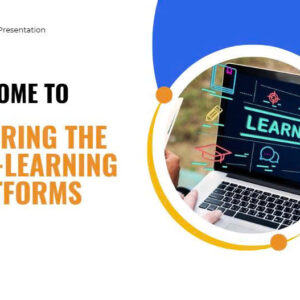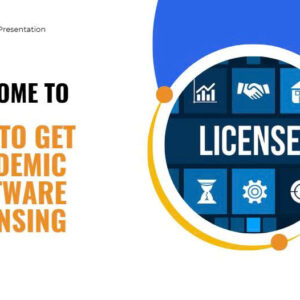The chalkboards of yesterday are rapidly being replaced by interactive whiteboards, and heavy textbooks are giving way to dynamic e-books and online resources. In our increasingly connected world, digital learning tools are no longer a novelty; they are fundamental to effective education, creating dynamic, engaging, and personalized learning experiences for students everywhere, from Da Nang to global online classrooms.
So, what exactly are digital learning tools, and why are they so essential in modern education? Let’s explore!
What Are Digital Learning Tools? 🤔
Simply put, digital learning tools are any digital resources, applications, software, or platforms designed to support, enhance, or facilitate the learning and teaching process. They leverage technology to make education more accessible, interactive, and efficient.
This vast category includes everything from simple apps on your smartphone to complex online learning platforms and specialized software programs. Their common goal is to move beyond traditional, passive learning by enabling active participation, collaboration, and tailored instruction.
Why Digital Learning Tools Matter: The Powerhouse Benefits 💡
The adoption of digital learning tools has brought about a paradigm shift in education, offering significant advantages for both educators and learners:

For Students:
- Enhanced Engagement & Motivation: Digital tools often incorporate multimedia, interactive elements, and even gamification, making learning more captivating and exciting than traditional methods. This boosts curiosity and a desire to learn.
- Personalized Learning: Many tools can adapt to individual learning paces and styles. Adaptive learning platforms analyze student performance and provide customized content and challenges, ensuring every student can learn at their optimal speed.
- Increased Accessibility & Flexibility: Learners can access educational content anytime, anywhere, on various devices. This is invaluable for remote learning, self-paced study, or reviewing concepts on the go.
- Diverse Learning Materials: Beyond textbooks, students can access a wealth of resources: educational videos, simulations, virtual labs, interactive quizzes, and up-to-date online articles.
- Improved Collaboration: Digital platforms provide spaces for students to work together on projects, share ideas, and engage in discussions, fostering crucial teamwork skills.
- Immediate Feedback: Many tools offer instant feedback on assignments or quizzes, allowing students to understand their mistakes and correct misconceptions immediately, reinforcing learning.
- Development of Digital Literacy: By using these tools, students naturally develop essential digital skills crucial for future careers and everyday life.
For Educators:
- Streamlined Administrative Tasks: Digital tools automate tasks like grading, attendance tracking, and content distribution, freeing up valuable time for teachers to focus on instruction and student support.
- Enhanced Assessment & Data Insights: Online quizzes and assignments often provide instant data on student performance, helping teachers identify learning gaps, tailor future lessons, and report on progress more effectively.
- More Engaging Lesson Delivery: Teachers can create dynamic presentations, interactive lessons, and multimedia-rich activities that cater to diverse learning styles.
- Facilitates Remote & Blended Learning: Digital tools were absolutely crucial during the pandemic and continue to be vital for hybrid models, allowing seamless transitions between in-person and online learning environments.
- Access to Vast Resources: Educators can easily find, integrate, and share a wider range of teaching materials, constantly updating their curriculum with the latest information.
- Improved Communication: Platforms for messaging, announcements, and virtual meetings simplify communication with students and parents.
Popular Categories & Examples of Digital Learning Tools 🚀
The landscape of digital learning tools is vast and constantly evolving. Here are some key categories and examples you’ll frequently encounter:
- Learning Management Systems (LMS): Centralized platforms for managing courses, content, assignments, and communication.
- Examples: Google Classroom, Canvas, Moodle, Blackboard.
- Interactive Presentation & Whiteboard Tools: For dynamic lessons and collaborative brainstorming.
- Examples: Google Slides, Microsoft PowerPoint, Prezi, Miro, Jamboard.
- Assessment & Quiz Tools: For creating engaging quizzes and tracking student understanding.
- Examples: Kahoot!, Quizizz, Quizlet, Socrative, Google Forms.
- Communication & Collaboration Platforms: For connecting students, teachers, and parents.
- Examples: Google Meet, Zoom, Microsoft Teams, Remind, ClassDojo, Flipgrid.
- Content Creation & Design Tools: For creating visually appealing learning materials.
- Examples: Canva (Education), Adobe Express, Animoto.
- Coding & STEM Education Tools: For teaching programming and technical skills.
- Examples: Scratch, Codecademy, Minecraft Education Edition.
- Adaptive Learning & Personalized Learning Platforms: Tailoring content to individual student needs.
- Examples: Khan Academy, DreamBox Learning, Smarty Ants.
- Note-Taking & Organization Tools: For students to manage their study materials.
- Examples: Evernote, OneNote, Google Keep.
- Digital Content Libraries & OER (Open Educational Resources): Vast repositories of free or affordable learning materials.
- Examples: Project Gutenberg, OpenStax, various university open courseware.
Digital learning tools are not just about technology; they are about reimagining the learning experience. By embracing these tools, educators can create more dynamic, equitable, and effective learning environments, preparing students not just with knowledge, but with the digital literacy and adaptability needed to thrive in our modern world.
What digital learning tools have made the biggest difference in your learning or teaching journey? Share your insights in the comments below!




